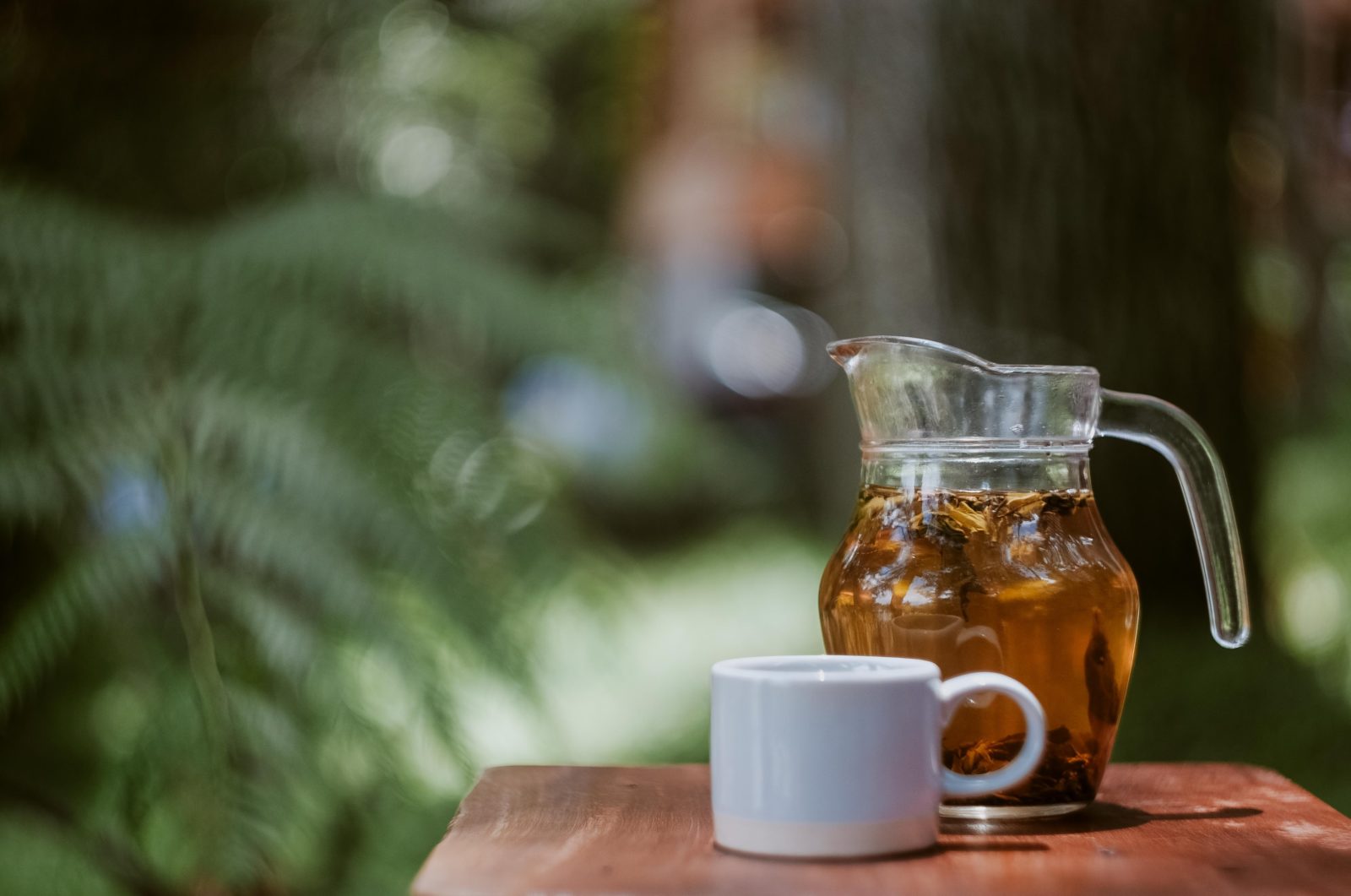Ku Cha House of Tea Celebrates Diversity of Iced Teas During Summer’s Heat
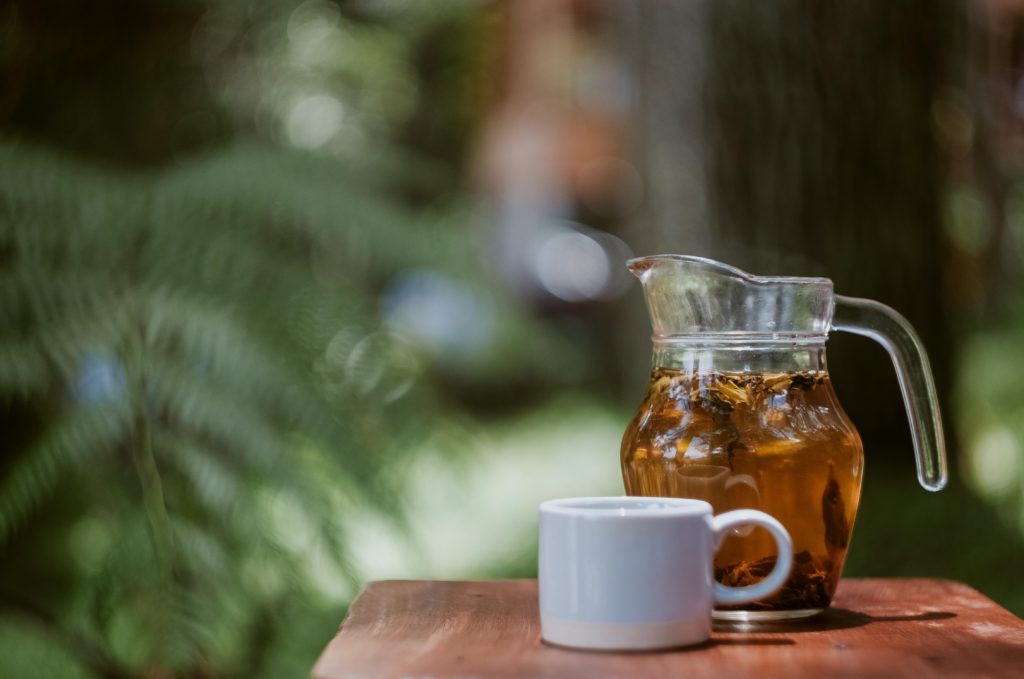
People savored hot tea for centuries before pouring it over ice, adding a slice of lemon (and maybe a little sugar) and gulping it down on sweltering days.
As summer’s heat intensifies, iced tea emerges as more than just a way to cool down—it’s an evolving beverage category shaped by cultural traditions, unique flavors, and wellness trends. At Ku Cha House of Tea, we celebrate the diversity of iced tea, offering a vast selection that caters to tea enthusiasts, health-conscious consumers, and adventurous palates alike. Join us as we explore the rich world of iced tea and uncover flavors and techniques that will elevate your summer sipping experience.
Most tea drinkers around the world still prefer their favorite beverage warm. But the United States is different. Here, 85 percent of all tea consumed is iced, according to the Tea Association of the United States.
How did tea turn so frigid in America?
Iced Tea Begins in Colonial America — But It’s Boozy
It begins with booze. Colonial revelers liked to mix alcoholic beverages in punch bowls, and they often used tea to flavor their drinks and dilute the liquor. But that wasn’t exactly iced tea.
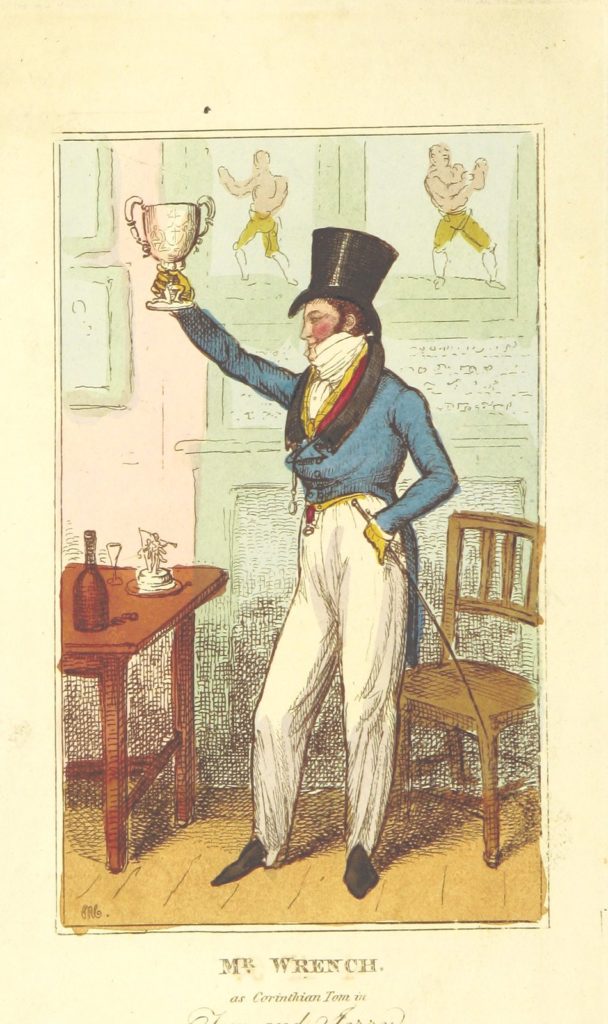
Americans first started purposefully cooling down their tea — minus the booze — in the 1860s; by 1876 the book Buckeye Cookbookhad an iced tea recipe, the first one recorded in the world. Shortly after, the book Housekeeping In Old Virginiaappeared, and that book contained a recipe for sweet tea, one that might look familiar today in the American South, where sweet tea has become a staple.
The 1904 Worlds Fair in St. Louis gave iced tea a huge boost. That summer was especially blazing in Missouri, and the 20 million fairgoers shunned hot beverages. Instead, they poured tea over ice. The Fair introduced a lot of people from the United States and around the world to iced tea.
Until World War II, consumers evenly divided their choices between black and green tea. Today, however, black tea is by far the most popular kind of tea; green tea imports in 2018 represented just 14.6 percent of all imported tea, according to the Tea Association of the United States.
The tide turned in the United States during the war, when trade with China and Japan was stopped; the countries were the largest suppliers of green tea. As a result, Americans turned to British-backed teas from India. By the end of the war, black tea was commanding 99 percent of tea sales.
A World of Iced Tea at Your Fingertips
Iced tea isn’t a one-size-fits-all beverage. Across the globe, different cultures have perfected their own take on this refreshing drink:
- Chinese Cold Brew Oolong – Naturally sweet with floral and honeyed undertones, ideal for slow steeping.
- Japanese Iced Matcha – A vibrant, antioxidant-rich powerhouse whisked cold for a frothy finish.
- Indian Iced Chai – A spiced, refreshing take on traditional chai, blended with milk or served black.
- Southern-Style Sweet Tea – A beloved American staple, rich, bold, and lightly sweetened.
- Moroccan Mint Iced Tea – Cooling and invigorating, featuring bold green tea and fresh mint.
At Ku Cha, we offer hundreds of global teas, allowing you to craft your own iced tea experience tailored to your taste and preferences.
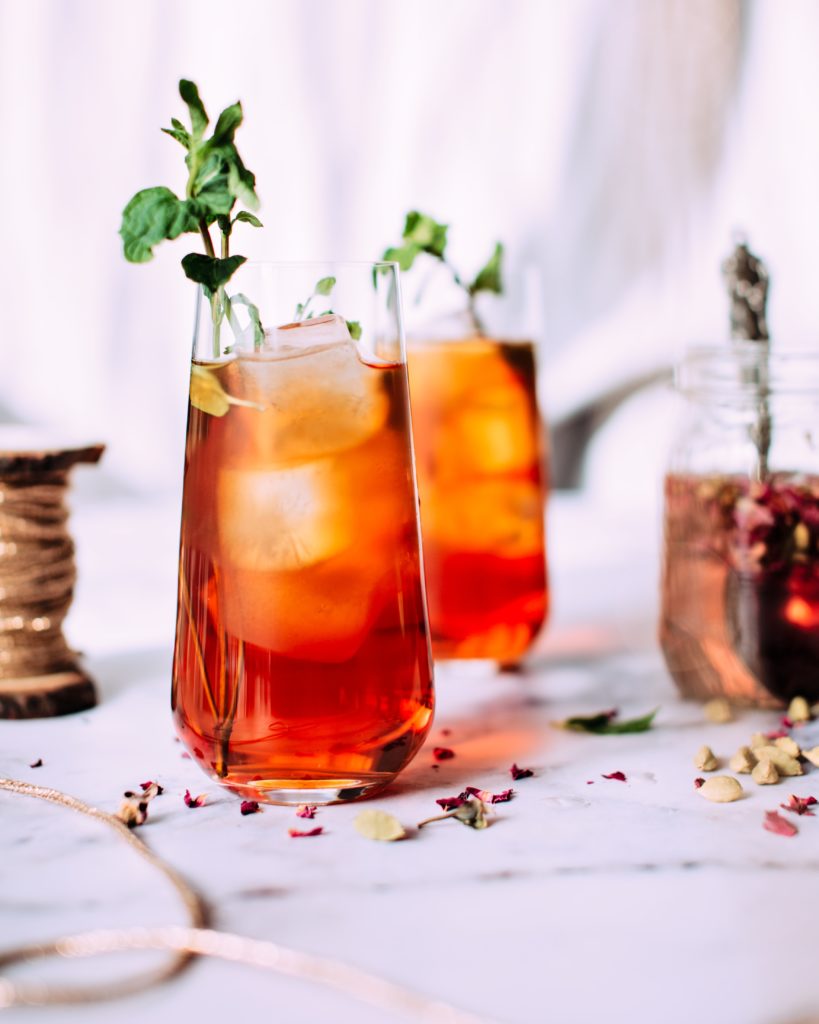
Iced Tea Spreads Around the World
We often think that iced tea is a uniquely American beverage, but it turns out people around the world drink it.
In Japan, for example, iced tea is a phenomenon, with cans and bottles for sale in vending machines across the island nation. Most Japanese iced tea is green or oolong tea, and it’s unsweetened. Black iced tea in Japan, on the other hand, normally is sweet. The Japanese, too, favor milk tea, which is black tea combined with milk.
Brazilians drink maté, but unlike their Argentine neighbors Brazilians drink their maté over ice, and sweetened. They also often add lime juice to the drink, called “maté com limão. Vendors go up and down Rio de Janeiro’s beaches with coolers full of the drink.
Iced tea is popular in Hong Kong restaurants, where black tea gets brewed in metal pots, and then poured into glasses of ice that often also hold simple syrup. Slices of lemon get placed atop the glass of tea, and customers then muddle the drink to fully combine the lemon, tea and sugar.
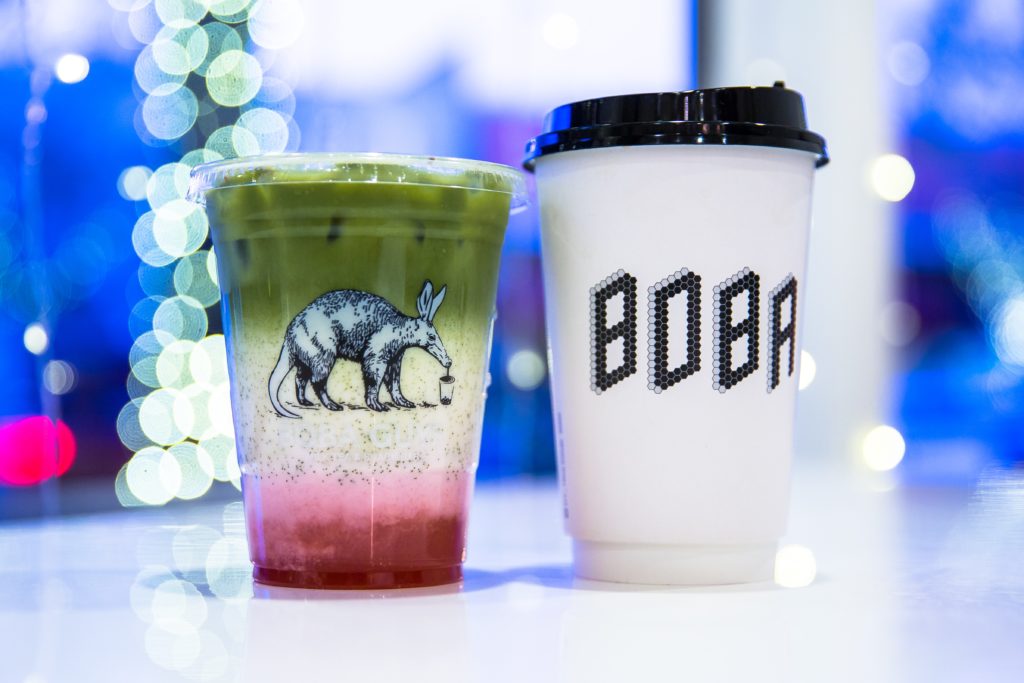
South Koreans drink cold green tea in the summer months. Austrians call iced tea “Eistee” and drink it with a lot of sugar.
Taiwan’s version of iced tea — bubble tea — has turned into an international phenomenon. The beverage normally combines brewed black tea with milk, sugar and tapioca balls. The tea, often referred to as “boba tea,” is sipped through straws wide enough for the tapioca balls — boba fans love those beads of tapioca.
The Swiss, of all people, introduced bottled iced tea to the world. Two employees of the Swiss beverage company Bischofszell tried iced tea in the United States and decided to bottle it. The company was the first to put bottled iced tea on mass-market shelves, in 1983.
As a tea importer, with hundreds of teas for sale online and on our stores’ shelves, we experiment with different styles of iced tea. While we think certain black teas from India and green teas from China can become winning iced teas, we especially enjoy iced herbal teas.
This summer, we are savoring Paradise Peach iced tea — Colorado grows some of the finest peaches in the United States, in our opinion, and this tea captures the peachy essence of the fruit.
Our house-crafted Paradise Peach blend involves hibiscus, rosehip, apple, orange and natural flavor. Our recipe, which we are featuring this month, is a winner.
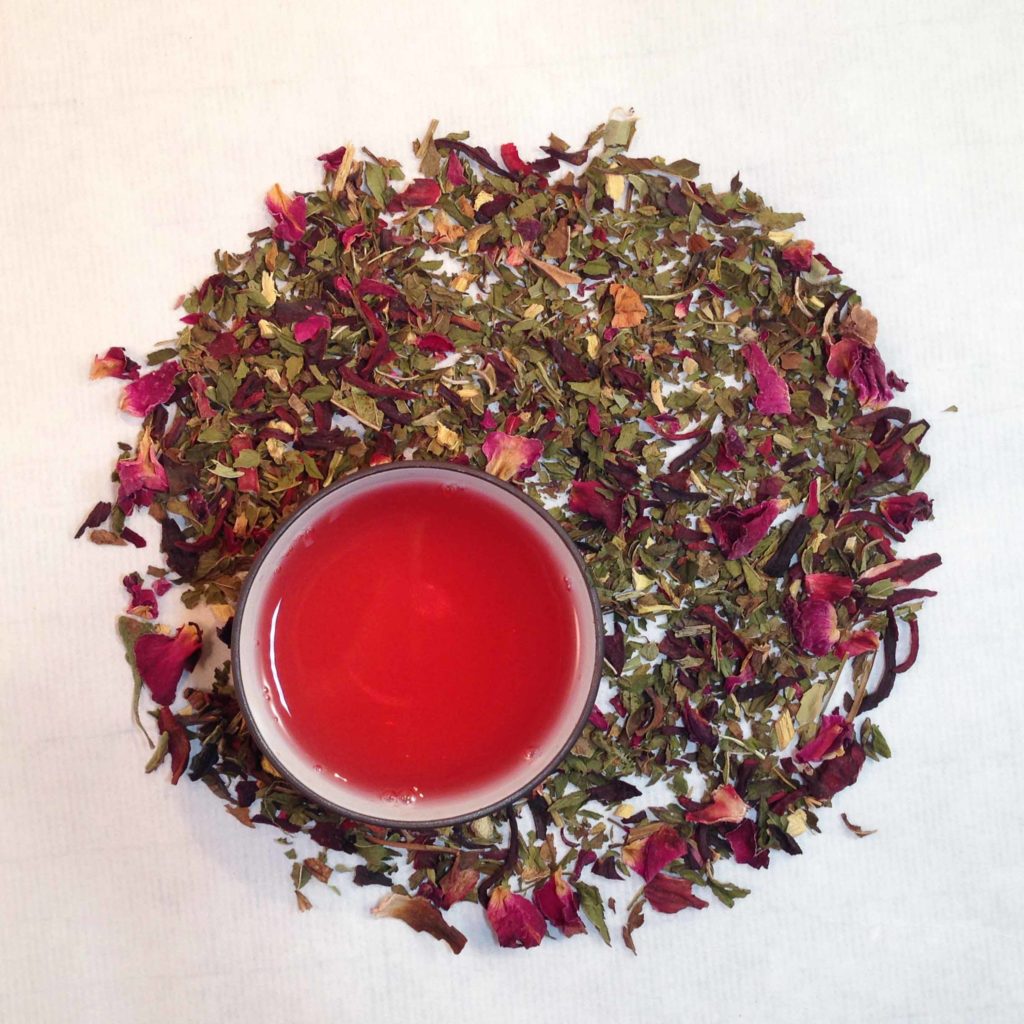
Sweet Heart Iced Tea is a Ku Cha House of Tea Favorite
Drink: Sweet Heart Iced Tea
But a longstanding favorite is iced Sweet Heart tea. Our custom blend incorporates licorice, rosebud and a whisper of stevia with hibiscus (which adds a jolt of sour) and refreshing peppermint. We could sip this iced tea for hours on a hot day.
Recipe for Pitcher of Sweet Heart Iced Tea
Use 2 teaspoons of tea for every 8 to 12 ounces of water. Most pitchers range between 48 and 60 ounces.
Pour boiling water over tea in a saucepan or some other heat-safe vessel and let steep for four minutes or more for a pitcher. Take tastes of the tea as it brews. Once you like the flavor, pour the hot tea through a strainer into another heatproof vessel and let cool.
Once the tea is cool, pour into the pitcher. Serve in glasses over ice.
The Health Benefits of Iced Tea
Beyond its refreshing qualities, iced tea provides a variety of health benefits that make it a perfect addition to your summer routine:
- Hydration with Benefits – Unlike sugary sodas, iced tea delivers flavor and hydration without excess calories.
- Antioxidant Power – Green and white teas are packed with catechins and polyphenols that support overall wellness.
- Caffeine Customization – Whether you need an energy boost (matcha, black tea) or relaxation (chamomile, rooibos), iced tea offers endless options.
- Digestive Support – Herbal blends with ingredients like ginger and peppermint can aid digestion, making them perfect after meals.
Brewing Techniques for the Perfect Iced Tea
Brewing iced tea is an art, and choosing the right method can enhance its flavor and aroma:
- Cold Brew Method – A slow steeping process (8-12 hours) that results in a smooth, naturally sweet tea with no bitterness.
- Flash Chill Method – A quick hot-brew technique where tea is steeped strong and then rapidly cooled over ice, preserving depth of flavor.
- Sun Tea – A nostalgic approach where tea steeps slowly under the sun for a lighter infusion.
- Infused Iced Tea – Elevate your tea by adding fresh herbs, citrus, or floral elements for a personalized twist.
At Ku Cha, our knowledgeable staff can guide you in selecting the perfect tea and brewing method to match your desired flavor profile.
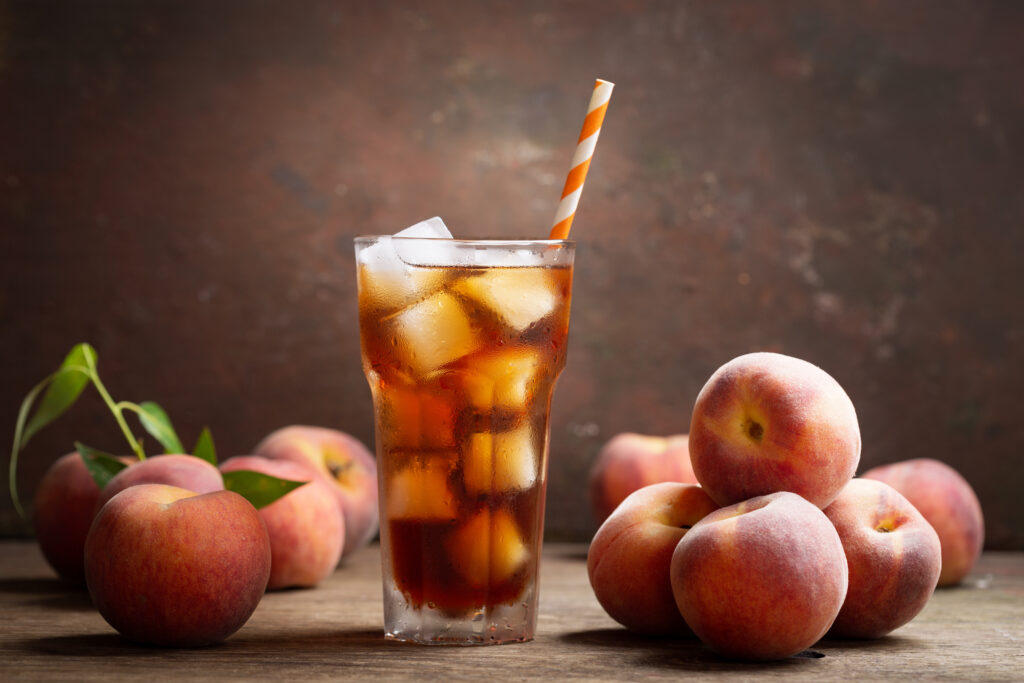
Iced Tea as a Lifestyle & Sensory Experience
Drinking iced tea isn’t just about quenching thirst—it’s a mindful, sensory experience. Imagine the aroma of a delicate jasmine green tea, the visual appeal of butterfly pea flower tea changing colors with lemon, or the invigorating chill of a mint-infused cold brew on a hot day.
We encourage you to embrace tea rituals that enhance relaxation and enjoyment, whether it’s sipping a glass while reading, sharing a pitcher with friends, or creating a signature summer tea blend.
Explore & Elevate Your Tea Experience with Ku Cha
Why settle for ordinary iced tea when you can explore an entire world of flavors? At Ku Cha House of Tea, we offer:
- Hundreds of hand-selected teas from around the world
- A variety of locations across Colorado for in-person exploration
- An easy-to-navigate online store for convenient nationwide delivery
- Tea tastings and expert recommendations to help you discover new favorites
This summer, transform the way you enjoy iced tea. Experiment with global flavors, embrace health benefits, and create a daily ritual that celebrates refreshment and discovery. Explore our collection and find your perfect iced tea today.
Frequently Asked Questions About Iced Tea
It depends on your preference! Green, black, white, oolong, and herbal teas all make excellent iced teas, each offering a unique flavor profile.
Simply add loose-leaf tea to cold water, let it steep in the refrigerator for 8-12 hours, strain, and enjoy!
Iced tea is packed with antioxidants, promotes hydration, supports digestion, and can be a great low-calorie alternative to sugary drinks.
Yes! Try using honey, agave nectar, or fresh fruit to add natural sweetness without overpowering the tea’s flavors.
Cold brew steeps slowly in cold water, resulting in a smoother, naturally sweet flavor, while hot brew extracts stronger flavors quickly before being chilled.
Experiment with infusions! Add fresh herbs, citrus slices, or floral ingredients like rose petals for a unique twist.
It depends on the tea type—black, green, and oolong teas contain caffeine, while herbal teas are naturally caffeine-free.
Store it in an airtight container in the refrigerator and consume it within 2-3 days for the best flavor.
Absolutely! Loose-leaf tea offers superior flavor, depth, and aroma compared to tea bags.
Consider floral blends like hibiscus, spiced teas like masala chai, or fruit-infused teas with peach, mango, or citrus.

